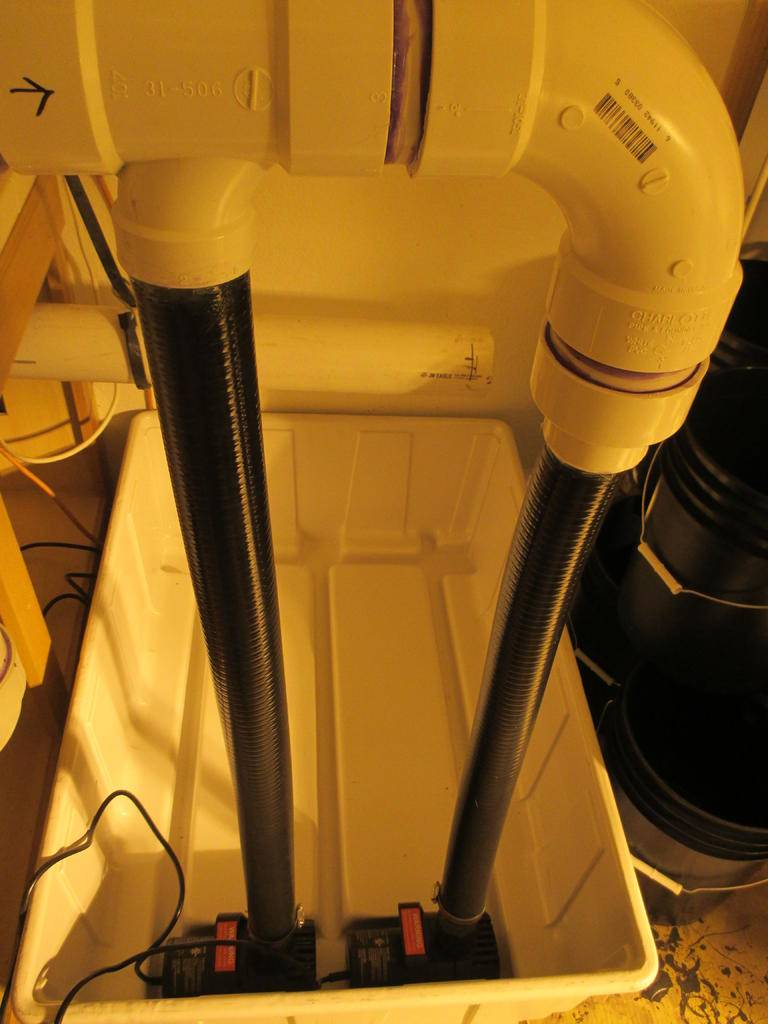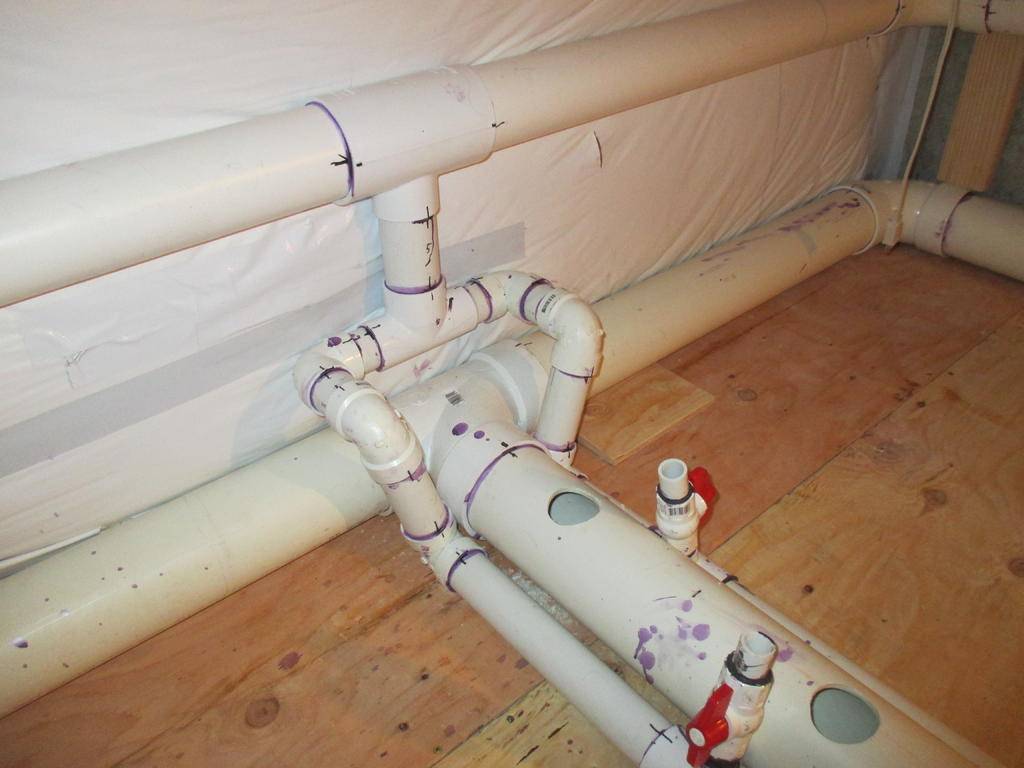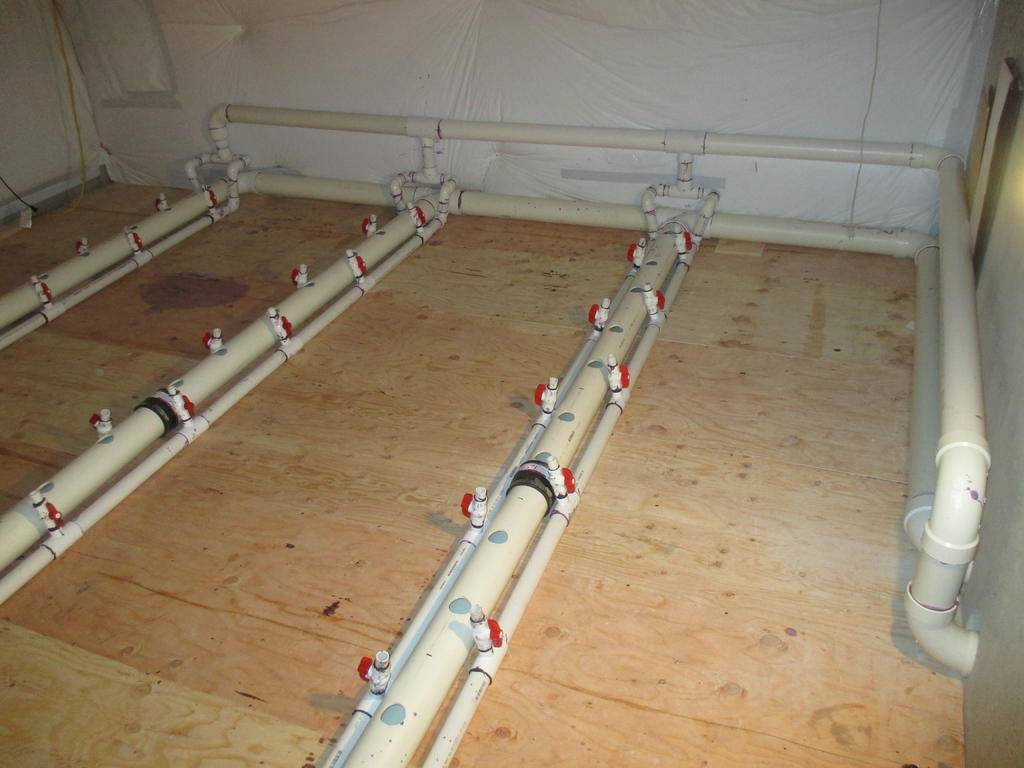Ole MacDonald
Member
Ok, the system is almost finished, and I took a break to post some pics. The water gets from the reservoir via the following path...
First it leaves the reservoir from two 2500 GPH pumps through 2" ID hose line. These both become a single 3" PVC line.

Then three 2" PVC come down from the 3" PVC and the split again into two 1.5" manifolds.


Each manifold supports six buckets.

First it leaves the reservoir from two 2500 GPH pumps through 2" ID hose line. These both become a single 3" PVC line.
Then three 2" PVC come down from the 3" PVC and the split again into two 1.5" manifolds.
Each manifold supports six buckets.




